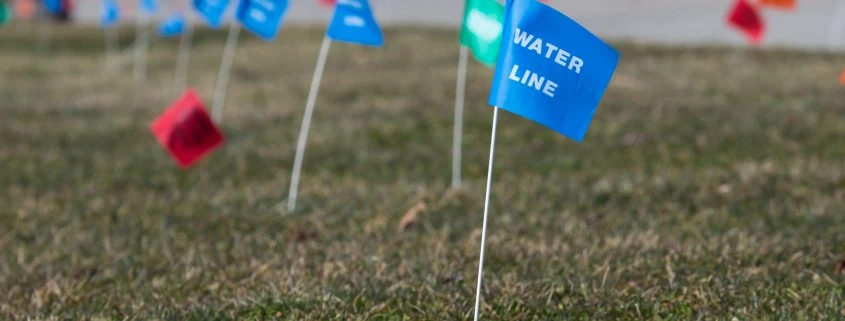Dig Safety: Awareness and Preparedness
Every 4 minutes an underground utility is struck and damaged by mechanized equipment, potentially causing harm to people/property, and interrupting utility services. The Common Ground Alliance, a stakeholder-run organization dedicated to protecting underground utility lines, reports approximately 379,000 utility damages occurred in 2016 resulting in an estimated cost of 1.7 billion in property damage as well as countless number of injuries and deaths.
Why are there so many underground utility strikes? According to the Common Grounds Alliance there are several re-occurring causes: Notification not made to the One-Call-Center, insufficient locating practices, unmarked facilities, miss-marked utilities, inadequate utility marking, inadequate excavation practices, improper bidding of jobs, improper equipment used during digging, digging with mechanized equipment without first exposing buried utilities using manual digging methods, and the list goes on.
Utility damages impact everyone directly or indirectly. Contractors are affected in terms of a break down in safety, profitability, insure-ability, productivity, legal and civil liabilities. Utility Owner/Operators are affected in terms of utility repairs and loss of resources. Lastly, everyone is inconvenienced by the interruption of vital utility services.
Excavators, locators, utility owners, and the Utility Protection Center all share equal responsibility in the avoidance of utility strikes. There are some best practices that should be adopted to mitigate utility damages. these practices are:
- Start at the very beginning: Employees should be trained properly on locating underground utilities, the correct use of equipment, and digging techniques. This includes when to use radar to detect the presence of underground lines and hand-digging and soft-digging techniques. They should also emphasize the correct type of equipment to use for every situation during the excavation.
- Contractors should follow job site checklists and provide adequate on-site supervision as well as ongoing safety awareness and training.
- Estimate jobs properly: Job estimates should include costs for allowing the time to locate underground utilities and verify marking, document 811 marking, dig around lines, use radar, and have downtime in the event of a strike.
- Review the site plans and call 811 at least 48 hours before digging. Check the Positive Response Information System to verify excavation request has been processed.
- Review flags and markings prior to starting the job to determine the proper equipment for the job.
- Identify, if possible, whether there may be additional lines that are not on site plans and/or are not marked.
- Document the job site with photographs prior to commencement of digging, taking photos of flags and markings and showing the scale of where you’re digging.
- Don’t assume the depth of utilities. Digging at a deeper depth than marked utilities does not always solve the problem. If you aren’t sure, dig slower and use manual tools to expose the utility and determine the tolerance zone.
- Most important, use your industry knowledge, common sense and always keep a focus on safety!
The cost of utility damages is a trickle-down effect that is paid by us all. Having a clear excavation plan and knowing what below can save lives, money time and property. If we all do our part everyone wins.
Reggie Nelson
HB NEXT





Leave a Reply
Want to join the discussion?Feel free to contribute!